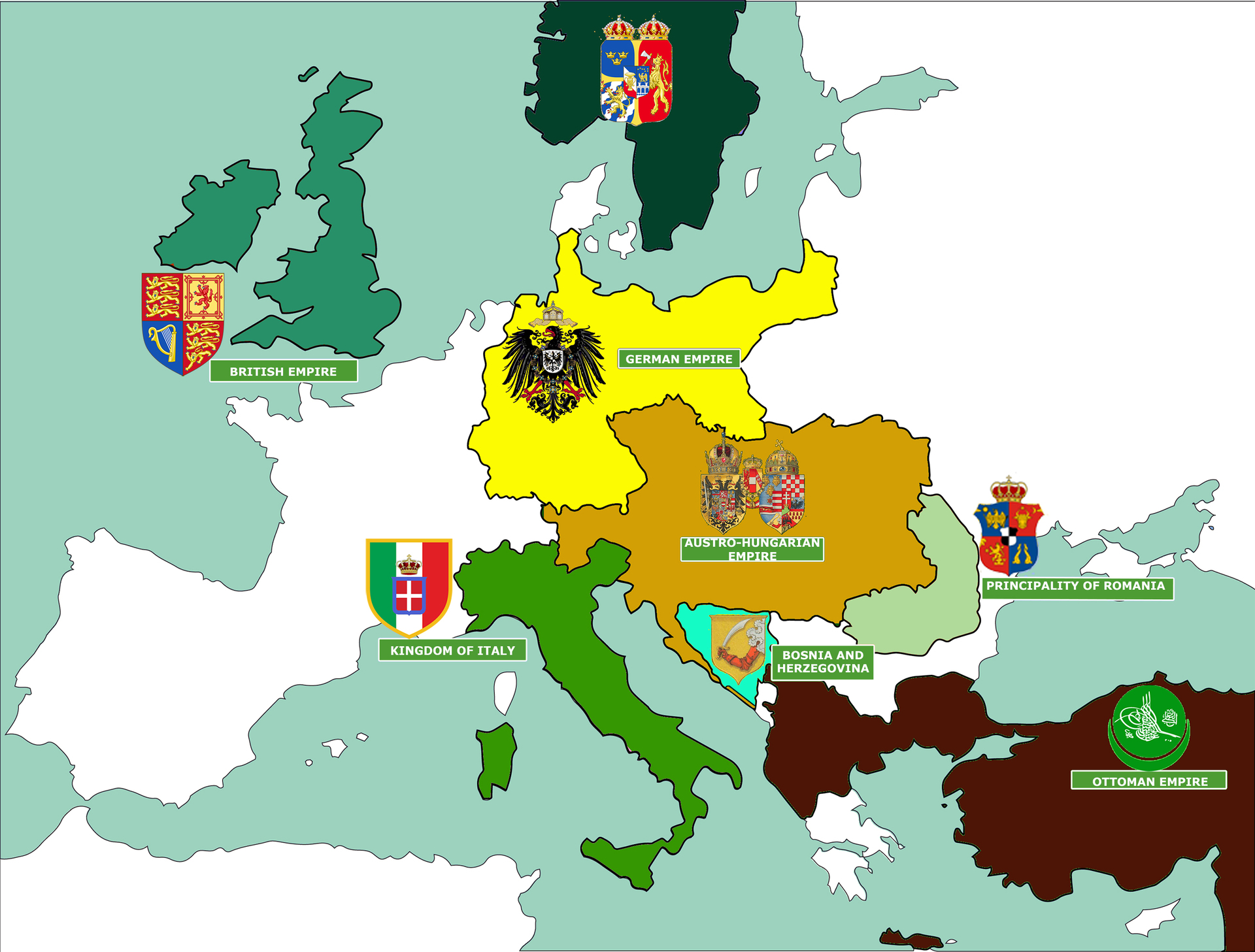European Championship 1878
The second half of the 19th century was a period that saw the rise of nationalism as a movement that advocates creation of a nation and a national country. There were thousands of ethnic groups in 19th century Europe, each of which was a potential nation. In most cases, however, this potential would never become active.
There is simply no singular criterion (same language, culture, history, religion, common origin) that would define one community a nation over another one. They are different from case to case. The creation of a nation would take place in countries that had been formed for centuries, like France, Spain, the Netherlands or the Scandinavian countries, as well as newly formed ones like Greece (1821), Belgium (1831), Italy (1861), Germany (1871), Romania, Bulgaria, Serbia, Monte Negro (all 1878), and even in multi-ethnic empires like the Ottoman Empire (Turks, Albanians, Arabs, etc.), Austria-Hungary (Austrians, Hungarians, Czechs, Slovaks, Croats, Slovenes, Poles, Ukrainians), or Russia (Russians, Ukrainians, Poles, Estonians, Finns, etc.). Only for peoples like, for example, the Portuguese, English, Irish, and Scottish, can there be a greater certainty when assuming that their national identity was constructed in earlier centuries.
The constructors of nations would come from among politicians, priests, philosophers, historians, poets, novelists, painters, etc. The process of constructing national identities would take generations. The national flag, anthem and coat of arms became the three symbols used by a sovereign country to announce its identity, so they command immediate respect. There were many requirements for the creation of a nation, such as development of democracy in social life, abolition of feudalism, transportation connections between different regions, development of the press in order to allow mass communication, obligatory education that was used to instill the national ideas, creation of a literary language… Since every nation had to have a “national history”, the 19th century saw the collection of records of past events, which would influence the emergence of modern historiography. In service of politics, its obsession or “patriotic duty” would become the effort to prove homogeneity and continuity of blood, territory, culture, and, especially, language. The pictures of the past were retouched in order to become politically useful, i.e. historians make up, alter, distort, pick and omit facts in order to prove historical and ethnic rights to a wanted territory, and to instill a national identity. That way, all national countries and those who aspired to become ones would develop myths about their origin in time and space, ancestors, migration, liberation, golden age, collapse, revival, special roles like “Bulwark of Christendom”, etc. All nations and emerging national countries also attempted to achieve maximum borders for their country (idea of a Greater country), invoking their own interpretations of historic and ethnic rights. The key point in all this was creating continuity, which was achieved by projecting modern nations and countries onto certain ancient or medieval feudal creations. An illusion is created that the nation always existed and just needed to be woken from “a long sleep” it fell into due to historical circumstances. This (quasi)history came from academies, literary societies or institutes, took over political podiums, and flooded the media and public spaces, streets, coffee shops, churches, rallies, etc. More importantly, it entered schools and education systems, inside which entire new generations would grow in the “spirit of nationalism”.

Sources
Literature
- Tihomir CIPEK, ''Nacija kao izvor političkog legitimiteta'', Nacija i nacionalizam u hrvatskoj povijesnoj tradiciji (ur. Tihomir Cipek, Josip Vrandečić), Zagreb, 2007.
- Adrian HASTINGS, Gradnja nacionaliteta , Rijeka, 2003.
- Eric John HOBSBAWM, Terence RANGER, Izmišljanje tradicije, Beograd, 2002.
- Vjeran KATUNARIĆ, Sporna zajednica : novije teorije o naciji i nacionalizmu, Zagreb 2003.
- Snježana KORDIĆ, Jezik i nacionalizam, Zagreb 2010.
- Katarina LUKETIĆ, Balkan: od geografije do fantazije, Zagreb, 2013.
- Ernst RENAN, ''Što je nacija?'', Pro tempore - časopis studenata povijesti, 4/2007
- Ivo RENDIĆ MIOČEVIĆ, Hrvatski identitet : trajnost i fluidnost - usporedba Kvarnera i gorske Dalmacije, Rijeka, 2006.
- Ivo RENDIĆ MIOČEVIĆ, ''Etnopsihologijski okvir hrvatske i srpske nacije'', Migracijske teme 16/2000, 148.
- Duško SEKULIĆ, Željka ŠPORER, Ilija ŽIVKOVIĆ, Asimilacija i identitet : studija o hrvatskom iseljeništvu u SAD i Kanadi, Zagreb, 1995.
- Martina Topić, Primjenjivost teorije Anthonyja D. Smitha na formiranje nacionalnoga identiteta u Dalmaciji (doktorska disertacija), Zagreb: Filozofski fakultet, 2010
Map
- http://www.euratlas.net/history/hisatlas/balkan_states/187860BK.html
- Europe: http://www.worldmapsonline.com/europeaftcongberlin.htm
- Glavna karta: http://geacron.com/home-en/?&sid=GeaCron2707
- Jerseys http://dyo.blksport.com/#/
- Germania (second photo) https://depositphotos.com/search/germania.html?qview=30471437
